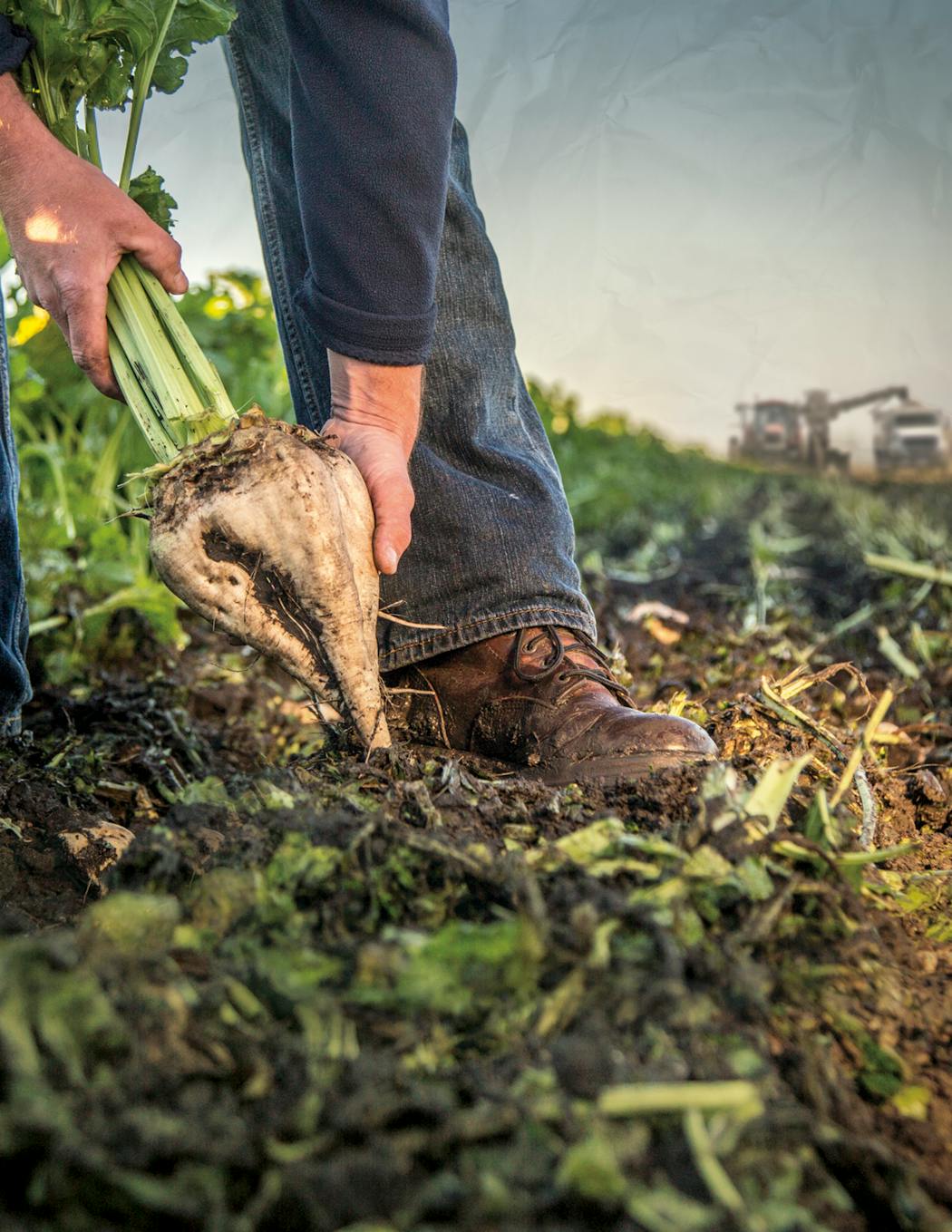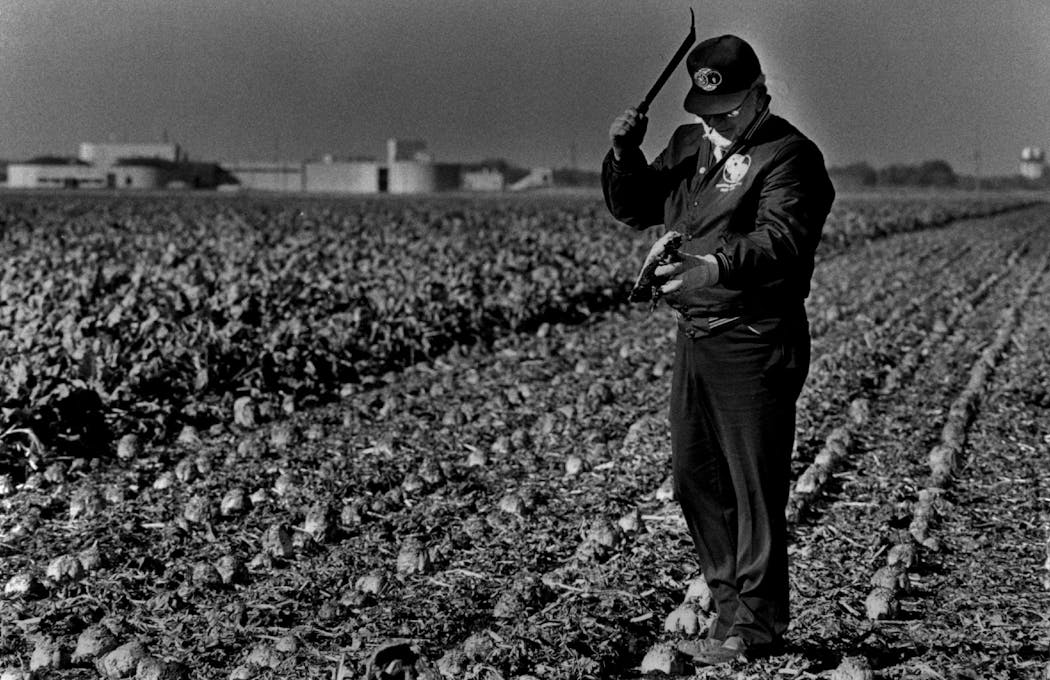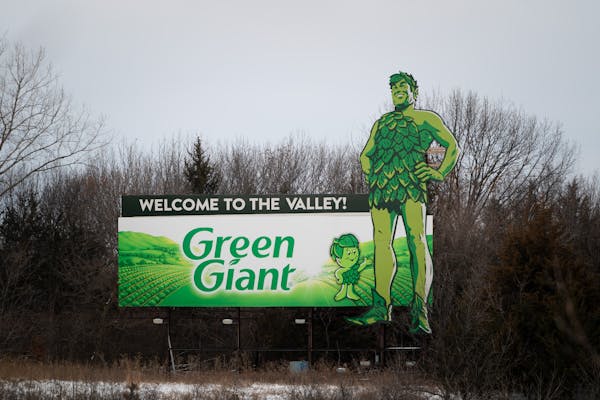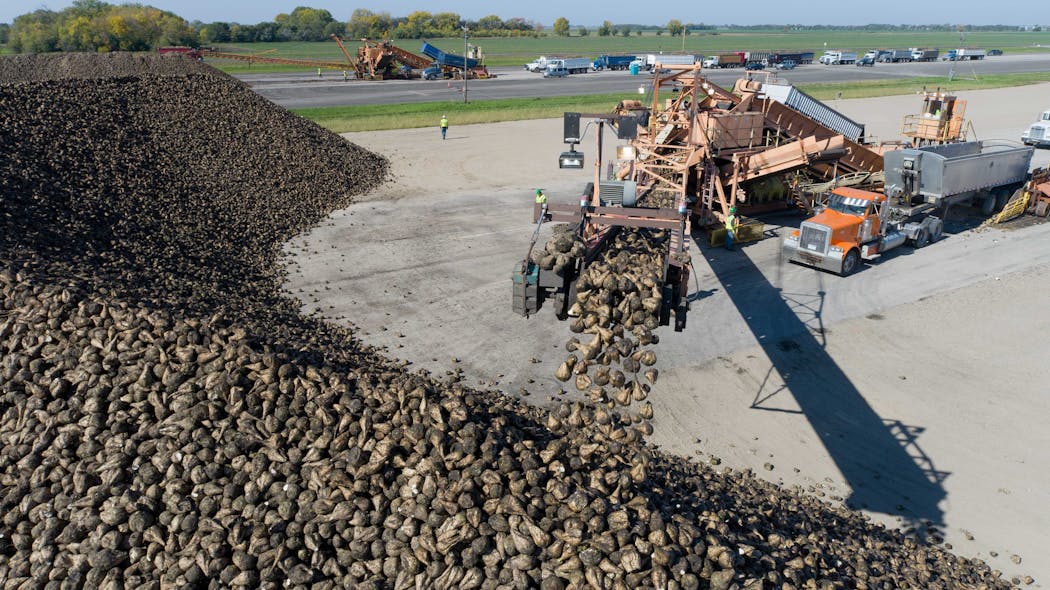Is Minnesota really one of the nation's top sugar producers?
Listen and subscribe to our podcast: Via Apple Podcasts | Spotify | Stitcher
Americans consume sugar from beets every day, whether they realize it or not.
Unless the bag says otherwise, the sugar lining grocery shelves and tucked away in our kitchen cupboards probably came from beets. And those beets probably grew in Minnesota.
Sugar beets are big business in Minnesota, as the state's third-most-valuable crop after corn and soy.
A reader remembered learning in school that Minnesota was America's sugar beet capital. They wanted to know if that was true, so they sought answers from the Star Tribune's reader-powered feature, Curious Minnesota.
The answer: a resounding you betcha.
A sweet harvest
Minnesota produced a third of the nation's total sugar beet harvest in 2021, amounting to a whopping 12.3 million tons of the sweet vegetable, according to the U.S. Department of Agriculture. The runner-up among the country's 11 sugar beet-producing states was Idaho, which grew roughly half as much as Minnesota.
In fact, the North Star State has led the nation in sugar beet production for more than 30 years.
That doesn't make Minnesota the nation's largest sugar producer, however. About 40% of the country's sugar comes from sugar cane, which is largely grown in Florida and Louisiana. Those two Southern states bag more sugar than Minnesota, according to the USDA.
Beets provide about 60% of the white table sugar produced domestically, according to the USDA. If not specified on the label, sugar purchased at stores is likely from beets or a blend of beet and cane.
The quality and taste of the sugar extracted from sugar beets is nearly identical to that pressed from sugar cane, which is why the humble beet became the major commodity it is today.
About 3,500 family farms in Minnesota grow sugar beets for three cooperatives: American Crystal Sugar; Minn-Dak Farmers Cooperative; and Southern Minnesota Beet Sugar Cooperative. Each co-op processes sugar from sugar beets and is fully farmer-owned.
"Minnesota farms grow sugar; sugar is not manufactured in a laboratory," Thomas Peters, the sugar beet agronomist for the University of Minnesota Extension and North Dakota State University Extension, wrote in a wide-ranging overview of the industry provided for this story.
Why sugar beets?
In the 18th century, German chemists discovered how to form sugar crystals from pulverized beets. The resulting sucrose crystals mirrored the sugar that had been derived from sugar cane for millennia, but were much less expensive than importing cane from the tropics.
That innovation helped launch the European sugar beet industry — which was later exported to North America.
"Immigrants arriving in Minnesota in the mid-1800s, many with family members familiar with sugar beet cultivation, planted various crops including sugar beets to test the land's agricultural possibilities," Peters wrote. "Rich and fertile soils in northwest, west-central and south-central Minnesota combined with 12 to 15 hours of summer sun, plenty of rainfall, and cooler temperatures during sugar accumulation benefit sugar beets."
Similar in shape to the typical red beet found at grocery stores and farmers markets, the sugar beet is white and grows up to 18 inches long. They weigh between 2 and 5 pounds at harvest.
The modern sugar beet is about 75% water, 5% pulp and up to 20% sugar — a strikingly high concentration that makes sugar beets an economical choice for sugar extraction.
If sweeter fruits seem like a more obvious source for sugar, consider the higher prices growers fetch for even unprocessed apples, berries and melons — and the higher cost to grow them.
Sugar at the store retails for about 55 cents per pound. Apples at Walmart were on sale for $1.57 a pound last week.
Sugar beets also contain far more sucrose — as opposed to fructose and glucose — that is more easily turned into white table sugar or brown sugar. The USDA puts it plainly: "This is a sturdy crop grown in a wide variety of temperate climatic conditions."
Farm to table (sugar)
Planted in mid-April to mid-May, sugar beets are typically harvested for processing in late August through October. Then the processing plants fire up, creating a distinct aroma that wafts across the prairie as communities come together to support the harvest.
Processing involves slicing the beets into long, thin strips and soaking them in hot water to remove the sucrose. That sugar-water mixture is disinfected, boiled and dried, leaving behind sugar crystals. The remaining pulp is processed and sold as livestock feed.
"Sugar beet harvest is a community activity due to its 24-hour schedule and the number of people taking part-time jobs or taking vacation from full-time jobs to support family members," Peters wrote.
And it's not just farmers and truckers pitching in during harvest. "One can purchase a sandwich at Subway in Ada, Minn., at 4 a.m.," Peters added.
All U.S. sugar beet processing today is grower-owned, a marriage of convenience and necessity.
"The crop is of little value without a processor to extract the sugar, and once a sugar factory is constructed, a company must have a reliable supply of beets," says the American Sugarbeet Growers Association. "There has always been a closer and more cooperative relationship among growers and companies than is found with other agronomic commodities."
Minnesota's three sugar beet cooperatives were formed in the 1970s, a time when California still dominated sugar beet production, according to USDA figures. But by the end of that decade, Minnesota doubled its sugar beet production. And by the end of the 1980s, Minnesota's began its reign as sugar beet capital.
The region's seven sugar beet processing plants thrived due to an atypical agricultural advantage over California and other growing regions.
"Because they are largely water, sugar beets are mostly stored outside and freeze on cold winter days," Peters wrote. "By freezing the sugar beets, it preserves sugar and allows for the longest processing campaign in the world."
If you'd like to submit a Curious Minnesota question, fill out the form below:
Read more Curious Minnesota stories:
Why don't farms water their crops at night?
Why are Honeycrisp apples still so expensive?
Why doesn't Minnesota's governor pardon the ceremonial turkey?
How do food scraps get recycled in Minn. — and how good are we at it?
Was Minnesota once home to U.S. government-sponsored hemp farms?
Does Minnesota or some other state have the best claim to Paul Bunyan?







